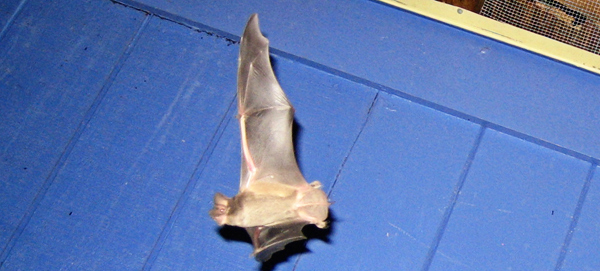- info@wildlifeanimalcontrol.com
Call us for help in your town
Wildlife Control Education
How do wildlife rehabilitators handle bats?
Bats are one of the most widely spread species of mammals in the world, but due to various reasons, they too can become threatened and in need of human care by trained professionals. Often times there will be abandoned, injured bats left behind by their colony after relocation, in such cases they can become eligible for nurturing care by the hands of local wildlife rehabilitators if there are any available in the area.

Due to the very nature of bats, extreme measures of caution should be taken when dealing with them, and that is why that matter is best left to the hands of those who specialize in it, there are several key treatments bats undergo in their wildlife rehabilitation.
First and foremost, they are inspected for any signs of rabies, since it is commonly known that they are frequent transmitters of that highly dangerous disease. However, the symptoms can vary from case to case, but usually they would include the inability of a bat to walk normally or hang. Furthermore, frequent crying out and any signs of holding their wings over their head for extended periods of time can be an indicative factor of rabies.
After that has been taken care of, the next course of actions performed is a thorough physical examination, but only if the bat has been found to be free of rabies. In this step, the rehabilitators look for any signs of injuries which include broken bones, or cuts, tears in the wings and things of that nature. They take measurements of the bats in order to check for their healthy weight, this is followed by procedures to rehydrate the bats as they are often found completely dehydrated. By checking at the condition of their teeth, their approximate age can be determined since young bats have incredibly sharp teeth, while older bats show signs of wear and tear.
The following step is the initiation of the care in captivity, bats are brought in to a safe area and allowed for some time to acclimatize and calm down. Food, such as mealworms is introduced for juveniles or adults while puppies are usually fed baby formula. It may take some forcing to get bats to realize that mealworms are food, but once they get it, they will eat on their own.
Finally, only certain wildlife centers are permitted to keep the bats permanently in captivity, this is mostly the case when they are held for educational purposes. Therefore, appropriate cages are provided that serve as their habitat; these are made according to each individual species of bats, in case that some need more room or any other additional features. However, unless decided otherwise, most rehabilitators return the bats to the wild, the place they have been found in the first place, as long as they’ve grown back to their full strength.
Go back to the How to get rid of bats home page.
Need bat removal in your hometown? We service over 500 USA locations! Click here to hire us in your town and check prices - updated for year 2020.

















